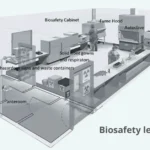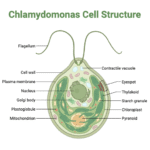Answered
DNA replication is the process by which a cell duplicates its DNA, creating two identical copies from the original DNA molecule. This process is essential for cell division, allowing each daughter cell to receive an exact copy of the genetic material. Here’s a brief overview of the process:
- Initiation: The process begins at specific locations on the DNA molecule called origins of replication. DNA helicase unwinds the double helix, separating the two strands and forming a replication bubble.
- Priming: RNA primase synthesizes short RNA primers on the single-stranded DNA to provide a starting point for DNA synthesis.
- Elongation: DNA polymerase adds nucleotides complementary to the template strand, creating a new strand of DNA. This occurs in the 5′ to 3′ direction. On the leading strand, DNA polymerase can synthesize continuously. On the lagging strand, DNA polymerase synthesizes in short segments known as Okazaki fragments, which are later joined by DNA ligase.
- Proofreading and Error Correction: DNA polymerase has proofreading abilities to correct errors by removing and replacing incorrect nucleotides.
- Termination: Replication ends when the entire DNA molecule has been duplicated, and the replication machinery is disassembled. The result is two identical DNA molecules, each with one original strand and one newly synthesized strand.
This process ensures that genetic information is accurately passed on during cell division.
Did this page help you?




